Introduction
Imagine you’re searching for the perfect engagement ring or a stunning piece of jewelry to wear for a special occasion. You want something that sparkles like a diamond but doesn’t break the bank. Here’s the challenge: natural diamonds are expensive, and finding an affordable, high-quality alternative feels overwhelming. So, you ask yourself, “Is there a gemstone that shines as brightly as a diamond but fits my budget?”
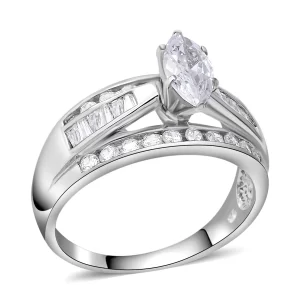
The answer lies in cubic zirconia, often abbreviated to CZ. Known for its brilliant sparkle and diamond-like appearance, CZ has become a popular choice for those seeking beauty and value. In this article, we’ll dive deep into everything you need to know—from what it is and how it’s made to how it compares with other diamond alternatives and how to care for it. Cubic zirconia might be your perfect match if you’re looking for a dazzling gemstone without the hefty price tag.
Table of Contents
- What Is Cubic Zirconia?
- How Is Cubic Zirconia Made?
- How Is Cubic Zirconia Different from Diamonds?
- Durability and Everyday Wear
- Common Misconceptions
- Does Cubic Zirconia Lose Its Sparkle Over Time?
- Is Cubic Zirconia a Good Choice for Engagement Rings?
- How Do You Care for Cubic Zirconia Jewelry?
- Can Cubic Zirconia be Colored?
- Is Cubic Zirconia Hypoallergenic?
- How to Distinguish Cubic Zirconia from Diamonds
- How Does Cubic Zirconia Compare to Other Diamond Alternatives?
- Frequently Asked Questions
What Is Cubic Zirconia?
Cubic zirconia, or CZ for short, is a shiny and affordable gemstone made in a laboratory. It looks very similar to a diamond because of its sparkle and clarity, making it a popular choice for jewelry. CZ is created using zirconium dioxide, a type of crystal that forms under high heat and pressure.
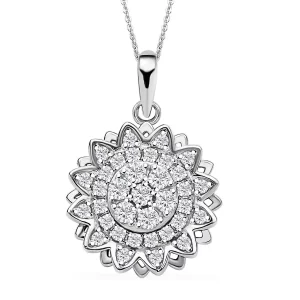
In the 1970s, scientists developed a way to make cubic zirconia that looked like a diamond but cost much less. This discovery made it possible for more people to enjoy beautiful jewelry without spending much money.
While CZ is not as hard as a diamond, it’s still strong and can be worn daily if handled with care. People love CZ because it offers a brilliant shine and is available in many shapes and sizes, perfect for rings, necklaces, earrings, and bracelets.
Cubic zirconia is an excellent choice if you want the look of diamonds without the high price tag. Plus, it’s available in different colors by adding special chemicals during the creation process, giving you even more options.
Subscribe to our blog for more expert insights on dazzling gemstones and discover the perfect sparkle for every occasion!
How Is Cubic Zirconia Made?
CZ is made in a laboratory using a crystal called zirconium dioxide. Scientists melt this crystal at extremely high temperatures, over 4,000 degrees Fahrenheit! Once the zirconium dioxide is melted, they let it cool slowly to form a solid crystal. This process creates a clear and shiny gemstone that looks like a diamond.
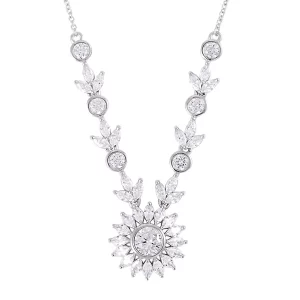
Sometimes, scientists add different chemicals during the melting process to change the color of the CZ. For example, they might add iron or titanium to make the gemstone blue or green. This way, cubic zirconia can come in many colors, like pink, yellow, or even purple.
After the crystals have cooled down and hardened, they are cut and polished into different shapes, just like diamonds. Jewelers then set these sparkling gems into rings, necklaces, and other pieces of jewelry.
The whole process is carefully controlled to make sure each CZ gem looks perfect. Because it’s made in a lab, CZ is more affordable than diamonds, giving you a beautiful and budget-friendly option for your jewelry collection.
How Is Cubic Zirconia Different from Diamonds?
Cubic zirconia and diamonds might look the same at first glance, but they have some important differences. The biggest difference is that diamonds are natural gemstones found in the ground, while CZ is a lab-made gemstone.
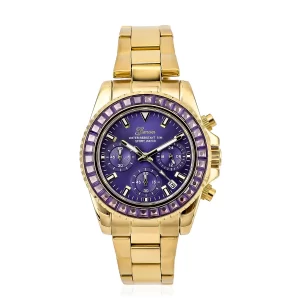
One of the easiest ways to tell them apart is by their hardness. Diamonds are the hardest natural material on Earth, scoring a perfect 10 on the Mohs hardness scale. CZ isn’t as hard, scoring an 8.0 to 8.5. This means that diamonds are better at resisting scratches, while CZ can get scratched more easily.
Another difference is their sparkle. Diamonds have a higher “refractive index,” which is a fancy way of saying they bend light better and shine more brightly. Cubic zirconia still shines beautifully, but not as much as diamonds.
Diamonds are also denser than CZ, meaning they weigh more. If you had a diamond and a cubic zirconia of the same size, the diamond would be heavier.
Lastly, diamonds often have tiny natural marks or inclusions, while CZ is usually flawless because it’s made in a lab. So, if you see a perfectly clear stone with no flaws at all, it’s more likely to be CZ than a diamond.
Cubic zirconia and diamonds may look alike, but they differ in their hardness, weight, and brilliance. Even though they are not the same, CZ offers an affordable and beautiful alternative to diamonds.
Durability and Everyday Wear
CZ is a durable gemstone, but it’s not as tough as a diamond. It scores an 8.0 to 8.5 on the Mohs hardness scale, which means it can resist scratches fairly well but isn’t scratch-proof. Diamonds, on the other hand, score a perfect 10 and are much harder to scratch.
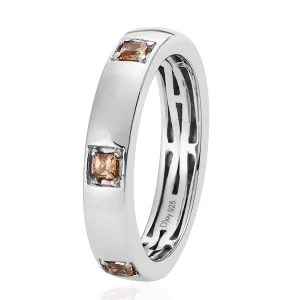
Even though CZ isn’t as hard as diamonds, it’s still strong enough to wear every day. However, it’s important to handle your jewelry carefully to keep it looking shiny. Over time, CZ can develop small scratches or become cloudy, especially if it gets dirty or exposed to harsh chemicals.
To make your CZ jewelry last longer, it’s best to remove it when doing activities like washing dishes, gardening, or playing sports. This helps prevent scratches and keeps the stones sparkling. You should also avoid contact with strong chemicals like bleach, which can damage the stones and the metal settings.
Regular cleaning is also important. You can clean your cubic zirconia jewelry using mild soap and warm water or a gentle jewelry cleaner. This will help remove oils and dirt that make the stones look cloudy.
Cubic zirconia is a durable gemstone that you can wear every day with a little extra care. By protecting it from scratches and cleaning it regularly, you can keep your CZ jewelry looking beautiful for a long time.
Common Misconceptions
There are some common misconceptions about cubic zirconia that can lead people to misunderstand this beautiful gemstone. Let’s clear up a few myths and set the record straight.
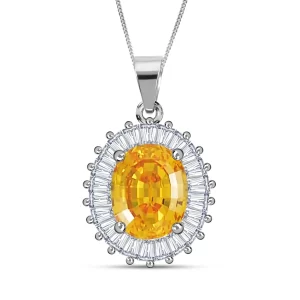
Misconception 1: Cubic zirconia will always look cloudy or lose its sparkle quickly.
- While it’s true that CZ can become cloudy over time, this often happens due to dirt or scratches. Regular cleaning with mild soap and water can help maintain its sparkle. With proper care, CZ can stay shiny and clear for many years.
Misconception 2: Cubic zirconia is less durable than other diamond alternatives.
- CZ is not as hard as diamonds but still scores an 8.0 to 8.5 on the Mohs hardness scale. This makes it more durable than many other gemstones, like opal or pearl, and suitable for everyday wear if handled carefully.
Misconception 3: Cubic zirconia cannot be used in engagement rings.
- Many people believe that CZ isn’t suitable for engagement rings because it’s not a diamond. However, it’s a popular choice for couples who want a beautiful, affordable ring. Some even choose CZ as a temporary stone while saving up for a diamond.
Misconception 4: Cubic zirconia is the same as zircon.
- CZ and zircon sound similar but are completely different gemstones. Zircon is a natural stone found in the ground, while CZ is created in a lab.
Misconception 5: Cubic zirconia only comes in clear, diamond-like colors.
- While clear CZ is the most popular, it can also be made in many other colors by adding special chemicals during the creation process. You can find CZ in shades like pink, blue, green, and yellow.
By understanding the truth behind these misconceptions, we can better appreciate CZ as a versatile and affordable gemstone.
Does Cubic Zirconia Lose Its Sparkle Over Time?
Cubic zirconia can lose some of its sparkle over time if it isn’t cared for properly. When oils from your skin, lotions, or dirt build up on the stone, it can make it look cloudy or dull. However, with the right cleaning and care, you can keep CZ shining brightly for a long time.
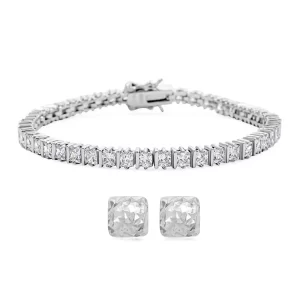
To clean your CZ jewelry, use mild soap and warm water. Gently scrub the stones with a soft brush, like a toothbrush, to remove any dirt. After cleaning, rinse the jewelry well and dry it with a soft cloth. You can also use a gentle jewelry cleaner if you prefer.
Another reason CZ might lose its sparkle is because of scratches. While it’s fairly durable, it can still get scratched if it’s bumped or rubbed against hard surfaces. To protect your jewelry, try to avoid wearing it while doing activities like gardening, exercising, or cleaning with harsh chemicals.
Storing your jewelry properly is also important. Keep it in a soft pouch or a jewelry box with separate compartments to prevent scratching. Avoid tossing all your jewelry into one drawer where it can easily get scratched.
Cubic zirconia can stay shiny and sparkly with the right care. Regular cleaning and careful handling will help keep your jewelry looking beautiful for many years.
Is Cubic Zirconia a Good Choice for Engagement Rings?
Cubic zirconia can be a great choice for engagement rings, especially if you’re looking for something beautiful and budget-friendly. It looks very similar to a diamond, giving you a sparkling ring that won’t break the bank.
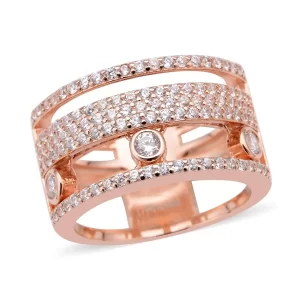
One of the main reasons people choose CZ is its affordability. Because it’s made in a lab, it’s much less expensive than a diamond. This makes it possible to get a larger, more impressive-looking stone for your ring without spending too much money.
Another advantage of cubic zirconia is that it’s available in many different shapes and sizes. Whether you prefer a classic round cut or a fancy princess cut, you’ll be able to find a style that suits your taste.
However, there are some things to consider before choosing CZ for an engagement ring. Although it’s quite durable, it’s not as hard as a diamond and can get scratched more easily. Over time, it may also become cloudy if not cleaned regularly.
For many couples, cubic zirconia is a good option for a temporary engagement ring. You can start with a CZ ring while saving up for a diamond ring later. Some couples even choose to keep their cubic zirconia ring as a backup for traveling or everyday wear.
In the end, whether or not cubic zirconia is the right choice depends on your preferences and budget. If you want a beautiful and affordable ring, CZ could be perfect for you. Just remember to care for it properly to keep it sparkling like new!
How Do You Care for Cubic Zirconia Jewelry?
Taking care of your cubic zirconia jewelry is important to keep it looking shiny and beautiful. Here are some easy tips to help you care for your jewelry.
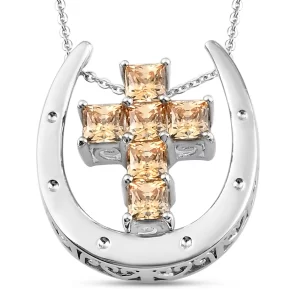
Cleaning Your Jewelry:
- Use warm water and mild soap to clean your CZ jewelry.
- Gently scrub the stone with a soft toothbrush to remove any dirt.
- Rinse it well under warm water and dry it with a soft cloth.
Avoid Harsh Chemicals:
- Keep your jewelry away from strong chemicals like bleach or ammonia, as they can damage the stones.
- Take off your jewelry before using cleaning products or swimming in a pool.
Protect from Scratches:
- CZ can get scratched, so remove your jewelry when doing activities like gardening, exercising, or washing dishes.
- Store your jewelry in a soft pouch or a jewelry box with separate compartments to prevent scratches.
Avoid Heat:
- High heat can cause CZ to crack or change color.
- Don’t leave your jewelry in direct sunlight for long periods and avoid exposing it to high temperatures.
Regular Inspection:
- Check your jewelry often to make sure the stones are still secure in their settings.
- If a stone seems loose, take the jewelry to a jeweler to have it tightened.
By following these simple steps, you can keep your cubic zirconia jewelry looking sparkly and new for many years!
Can Cubic Zirconia Be Colored?
Yes, CZ can be made in many different colors! While clear cubic zirconia is the most popular because it looks like a diamond, scientists can create other colors by adding special chemicals during the gemstone-making process.
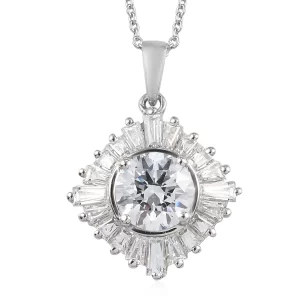
For example:
- Pink or Purple: Adding a metal called erbium gives CZ a pink or purple hue.
- Yellow or Orange: Adding cerium can make the gemstone look yellow, orange, or even red.
- Blue or Green: Adding cobalt or titanium can create beautiful blue or green colors.
Colored CZ is a fun and affordable way to add more color to your jewelry collection. Whether you want a birthstone color or just something different from the usual diamond-like clear stones, there are plenty of options to choose from.
Cubic zirconia can be made in almost any color, giving you endless choices for rings, necklaces, and more. You can find the perfect color that matches your style without spending a lot of money!
Is Cubic Zirconia Hypoallergenic?
CZ itself is hypoallergenic, which means it won’t cause allergic reactions. The gemstone is made from zirconium dioxide, a crystal that is safe for most people to wear.
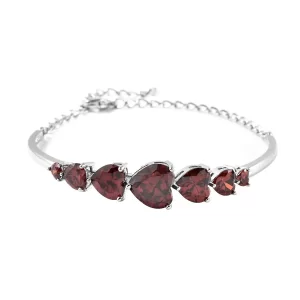
However, sometimes the metal used in the jewelry setting can cause allergies. Many jewelry pieces are made with alloys, which are mixes of different metals. Some of these alloys may contain nickel, a metal that can cause allergic reactions like itching or rashes.
To avoid allergic reactions:
- Look for cubic zirconia jewelry set in hypoallergenic metals like sterling silver, gold, or platinum.
- If you have a nickel allergy, choose jewelry labeled as “nickel-free.”
Another option is to look for jewelry made from stainless steel or titanium, which are less likely to cause allergies.
While CZ itself is hypoallergenic, be sure to choose jewelry with safe metal settings if you have sensitive skin. This way, you can enjoy your jewelry without any worries!
How to Distinguish Cubic Zirconia from Diamonds
CZ and diamonds can look very similar, but there are a few ways to tell them apart.
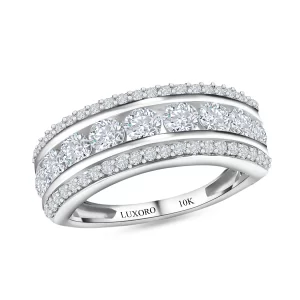
Hardness Test:
- Diamonds are the hardest natural material and score a perfect 10 on the Mohs hardness scale.
- CZ is less hard, scoring about 8.0 to 8.5.
- You can gently scratch a piece of glass with the gemstone. If it leaves a scratch easily, it’s likely a diamond. However, don’t try scratching valuable stones directly!
Weight:
- Cubic zirconia is denser than diamonds, which means it’s heavier.
- If you have a diamond and a CZ of the same size, the cubic zirconia will weigh more.
Sparkle and Brilliance:
- Diamonds have more sparkle because they have a higher refractive index (how well they bend light).
- CZ shines beautifully but has a rainbow-like brilliance that can look different from diamonds.
Flaws and Inclusions:
- Diamonds usually have natural flaws or inclusions that can be seen under a jeweler’s magnifying glass.
- CZ is created in a lab and often looks flawless because it’s free of inclusions.
Heat Conductivity:
- Diamonds conduct heat well, while cubic zirconia does not.
- Jewelers use special diamond testers that measure heat conductivity to tell the difference between diamonds and CZ.
Price:
- Diamonds are much more expensive than cubic zirconia.
- If a stone looks like a diamond but costs much less, it might be CZ.
If you’re still unsure whether a gemstone is a diamond or CZ, it’s best to have it checked by a jeweler or gemologist. They can use special tools to give you a clear answer.
Learn more: What is the Difference between Cubic Zirconia and Diamond?
How Does Cubic Zirconia Compare to Other Diamond Alternatives?
CZ is one of the most popular diamond alternatives, but there are other options too. Let’s see how it compares to some of them.
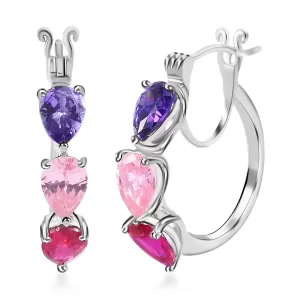
Moissanite:
- Moissanite is a lab-made gemstone that shines even brighter than diamonds because of its higher refractive index.
- It’s also very hard, scoring 9.25 on the Mohs scale, making it more scratch-resistant than CZ.
- Moissanite is more expensive than CZ but still cheaper than diamonds.
White Sapphire:
- White sapphire is a natural gemstone that has a clear, diamond-like appearance.
- It scores 9 on the Mohs scale, so it’s quite durable but not as brilliant as diamonds.
- White sapphire can have some natural flaws and isn’t as clear as cubic zirconia.
Lab-Grown Diamonds:
- Lab-grown diamonds are real diamonds made in a laboratory instead of being mined.
- They are chemically and physically identical to natural diamonds and have the same hardness and brilliance.
- Lab-grown diamonds are more expensive than CZ but usually cheaper than natural diamonds.
Synthetic Rutile:
- Synthetic rutile is another diamond alternative known for its strong brilliance.
- However, it’s softer than cubic zirconia and scratches more easily.
Glass:
- Some cheaper jewelry uses glass as a diamond substitute.
- Glass is much softer than CZ and scratches easily, making it less suitable for everyday wear.
Comparison Summary:
- Price: Cubic zirconia is the most affordable option, while lab-grown diamonds are the most expensive.
- Hardness: Moissanite and lab-grown diamonds are harder than CZ, making them more durable.
- Brilliance: Moissanite shines more brightly than cubic zirconia, but both offer beautiful sparkle.
Cubic zirconia is a great diamond alternative if you’re looking for something affordable and sparkly. But if you’re willing to spend more for greater durability or even closer diamond-like appearance, other options like moissanite or lab-grown diamonds might be worth considering.
Learn more: Zircon Diamond: Difference between Zircon & Cubic Zirconia
Conclusion
Cubic zirconia is a remarkable gemstone that combines beauty and affordability, making it a favorite choice for many jewelry lovers. Its lab-created brilliance closely resembles that of a diamond, offering an attractive alternative without compromising on style. Whether set in a ring, nCZ shines brightly in any jewelry piece.
While it may lack the hardness of diamonds and other precious stones, proper care and maintenance can keep CZ sparkling for years. From regular cleaning to careful storage, simple steps can preserve its clarity and shine. With a variety of colors, cuts, and settings available, this versatile gem caters to different tastes and occasions.
Ultimately, CZ offers a practical and stylish solution for those seeking a stunning gemstone on a budget. Whether you’re shopping for an engagement ring or a statement necklace, understanding its qualities and care ensures you can enjoy this dazzling gem with confidence.
Frequently Asked Questions
1. What is cubic zirconia?
Cubic zirconia, or CZ for short, is a lab-made gemstone that looks like a diamond. It’s made from a crystal called zirconium dioxide, giving it a beautiful sparkle similar to a diamond but at a much lower cost.
2. How is cubic zirconia different from diamonds?
Diamonds are natural stones found in the earth, while CZ is made in a laboratory. Diamonds are harder and more brilliant, scoring a 10 on the Mohs hardness scale, compared to 8.0-8.5 for CZ. CZ is also heavier than diamonds and doesn’t have natural flaws like diamonds do.
3. Is cubic zirconia durable for everyday wear?
Yes, CZ is durable enough to wear daily if handled carefully. However, it’s not as hard as diamonds and can get scratched over time. Regular cleaning and proper storage can help keep it looking shiny and new.
4. Does cubic zirconia lose its sparkle over time?
CZ can lose some of its sparkle if it gets scratched or dirty. To keep it sparkling, clean your jewelry regularly with mild soap and warm water. Avoid harsh chemicals and remove the jewelry when doing rough activities.
5. How is cubic zirconia made?
Cubic zirconia is made in a lab using a crystal called zirconium dioxide. The crystal is melted at very high temperatures and then cooled slowly to form clear, shiny stones. Sometimes, special chemicals are added to create colorful CZ.
6. Is cubic zirconia a good choice for engagement rings?
CZ is a great option for engagement rings if you’re looking for something affordable and beautiful. While it’s not as hard as diamonds, it can still be worn every day if cared for properly. Some people choose a CZ ring as a temporary option while saving up for a diamond.
7. How do you care for cubic zirconia jewelry?
To keep your CZ jewelry sparkling, clean it with warm water and mild soap. Use a soft toothbrush to gently scrub away dirt, then rinse and dry it with a soft cloth. Store your jewelry in a soft pouch or jewelry box to prevent scratches.
8. Can cubic zirconia be colored?
Yes, cubic zirconia can be made in many colors by adding special chemicals during the gemstone-making process. You can find CZ in pink, blue, green, yellow, and more.
9. Is cubic zirconia hypoallergenic?
Cubic zirconia itself is hypoallergenic, meaning it won’t cause allergies. However, some metals used in jewelry settings can contain nickel, which might cause an allergic reaction. Look for nickel-free or hypoallergenic settings.
10. How can you tell the difference between cubic zirconia and diamonds?
A jeweler can usually tell the difference using special tools. Cubic zirconia is heavier than diamonds, less hard, and often has a rainbow-like shine. Diamonds also have natural flaws, while CZ is usually flawless because it’s made in a lab.


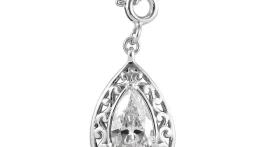
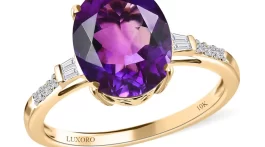

No Comment